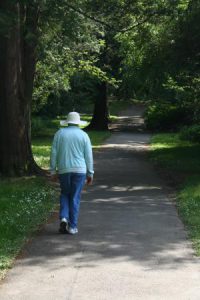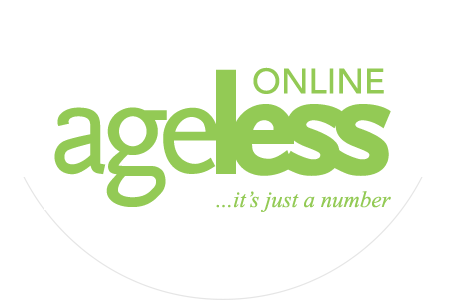Stop elderly abuse
With earlier news of an elderly being abused at a nursing home, we find out what the signs and symptoms are so we can stop such abuse.
 With a population of elderly in Singapore ballooning from 226,100 to 330,100 between 1999 and 2009, there are some undesirable effects. There were 145 cases of alleged elderly abuse in the whole of 2008; in January to September 2009, there were 131 cases. The main forms of abuse in 2008 were physical abuse (39 percent), followed by neglect (37 percent) and psychological abuse (25 percent). This is according to information extracted from the story behind SMRT’s Silver Tribute Fund.
With a population of elderly in Singapore ballooning from 226,100 to 330,100 between 1999 and 2009, there are some undesirable effects. There were 145 cases of alleged elderly abuse in the whole of 2008; in January to September 2009, there were 131 cases. The main forms of abuse in 2008 were physical abuse (39 percent), followed by neglect (37 percent) and psychological abuse (25 percent). This is according to information extracted from the story behind SMRT’s Silver Tribute Fund.
So what is elder abuse? It occurs when someone in a position of trust harms the health or well-being of an elderly person. This can be in the form of:
• Physical abuse – Causing pain or injury through aggressive acts such as physical torture, assault, physical confinement and sexual abuse.
• Emotional abuse – Repeatedly threatening, hurling insults or verbal abuses, making unreasonable demands, deliberately ignoring, inducing fear of violence, isolation and deprivation, and inflicting feelings of shame and humiliation.
• Neglect – Willfully failing to provide basic needs such as food, clothing, shelter, financial support and medical care.
• Abandonment – Willfully attempting to desert an elderly person.
• Financial abuse – Exploiting the funds and resources of an elderly, including misappropriating property, valuables or money.
Signs & symptoms
It is important to be alert to various signs and symptoms of elder abuse. Here are some signs for the different types of abuse:
1) Physical
• Unexplained bruises, burns, fractures, lacerations or hair loss
• Evidence of non-accidental past injuries (e.g. deformities, dislocation or pain)
• Difficulty in walking or sitting
• Pain or itching in the urinary or genitalia area
• Scarring, bruises or bleeding in external genitalia, vaginal or anal areas
2) Emotional
• Aggression and agitation
• Anxiety
• Display of constant fear
• Restlessness, confusion and non-responsiveness
• Depression, suicidal tendencies or psychoneurotic behaviour (e.g. obsession and hoarding food)
• Social withdrawal or isolation
3) Neglect
• Unexplained abrasions, fractures, sprains or rashes
• Poor hygiene (e.g. body odour, overgrown nails or soiled/inappropriate clothing)
• Malnutrition and/or dehydration
• Consistent lack of supervision, especially in dangerous activities or for long periods
• Unattended medical needs or misuse of medication
• Poor maintenance of house
4) Financial
• Blocked access to property
• Unusual activities or unexplained withdrawal of money from elderly’s bank account
• Signing of documents without the elderly person understanding what they mean
• An unusual interest by family members in the elderly’s assets
Characteristics of victims & abusers
Victims – Many victims of elder abuse and neglect minimise or deny the mistreatment they are suffering for fear of rejection and disruption to their lives, to avoid embarrassment and shame, and protect their family’s privacy and that of the alleged abuser. Some may also feel they deserve the mistreatment. Those who are mentally infirmed may not even be able to detect or report the abuse.
Common characteristics of a victim include being:
• Vulnerable
• Easily exploited
• Socially isolated (i.e. living alone or limited social support)
• Physically/cognitively-impaired
• Resistant to help
• Highly-dependent – economically, physically, socially or emotionally
Abusers – Abusers may be family or non-family members. In some situations, there may be several abusers. Abusers may include caregivers, adult children and the spouse of the elderly. Abusers tend to rationalise and justify their actions with excuses that they were provoked by the victim or claim that they have “lost control”. They tend to manifest traits such as:
• Stress
• Social isolation (limited social support network)
• A history of family violence
• Alcohol or drug addiction
• Poor communication with the victim
• Mental health problems
• Financial dependency on the elderly victim
Seeking help
An elderly victim can call the ComCare helpline at 1800 222 0000. Alternatively, he or she can call PAVe (Centre for Promoting Alternatives to Violence) at 6555 0390 or TRANS SAFE Centre at 6449 9088. Both centres specialise in providing a one-stop service for families experiencing violence. There is also a third centre called Care Corner Project StART under Care Corner FSC (Queenstown) that serves the west region at 6476 1481.
As a last resort, an elderly victim can seek recourse against abuse through the Court system:
• The Maintenance of Parents Act (Chapter 167B) allows the elderly to seek maintenance from their children if they are unable to provide for themselves.
• The Women’s Charter allows the elderly (both male and female) to apply for a Personal Protection Order from the Family Court to restrain the abuser from using violence.
• The Penal Code can be applied where there are serious injuries due to the use of weapons or if there is financial abuse.
• There are two other key legislations – Mental Health (Care and Treatment Act) for treatment or intervention for a person with mental disorder or health concerns and the Mental Capacity Act for a person who is deemed to lack mental capacity (i.e. the ability to make decisions). Please visit the website of the Office of the Public Guardian to find out more here.
The abuse may never stop if you do not take the first step to stop it!
(Some of the information in this article was taken with permission from an MCYS brochure called “Love Shouldn’t Hurt: Stop Elder Abuse”. Special thanks for MCYS’ See Bee Bee and Yee-Chow Choy Yin of TRANS SAFE Centre.)
** For more information on elder abuse, go to:www.family.gov.sg/stopfamilyviolence.
** PHOTO CREDIT: An elderly lady walking down a lonely path into the woods, oholene, stock.xchng)

0 Comments